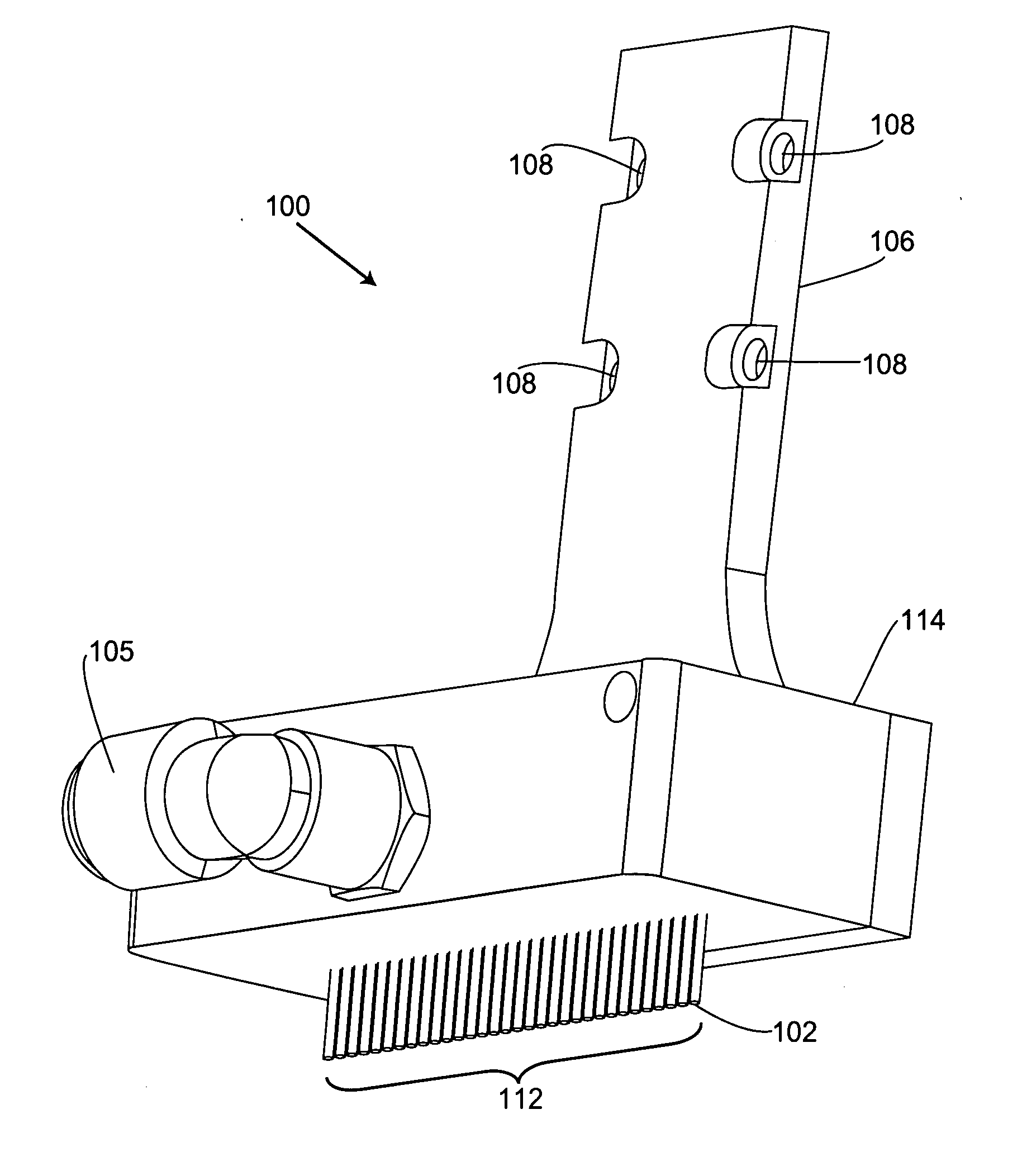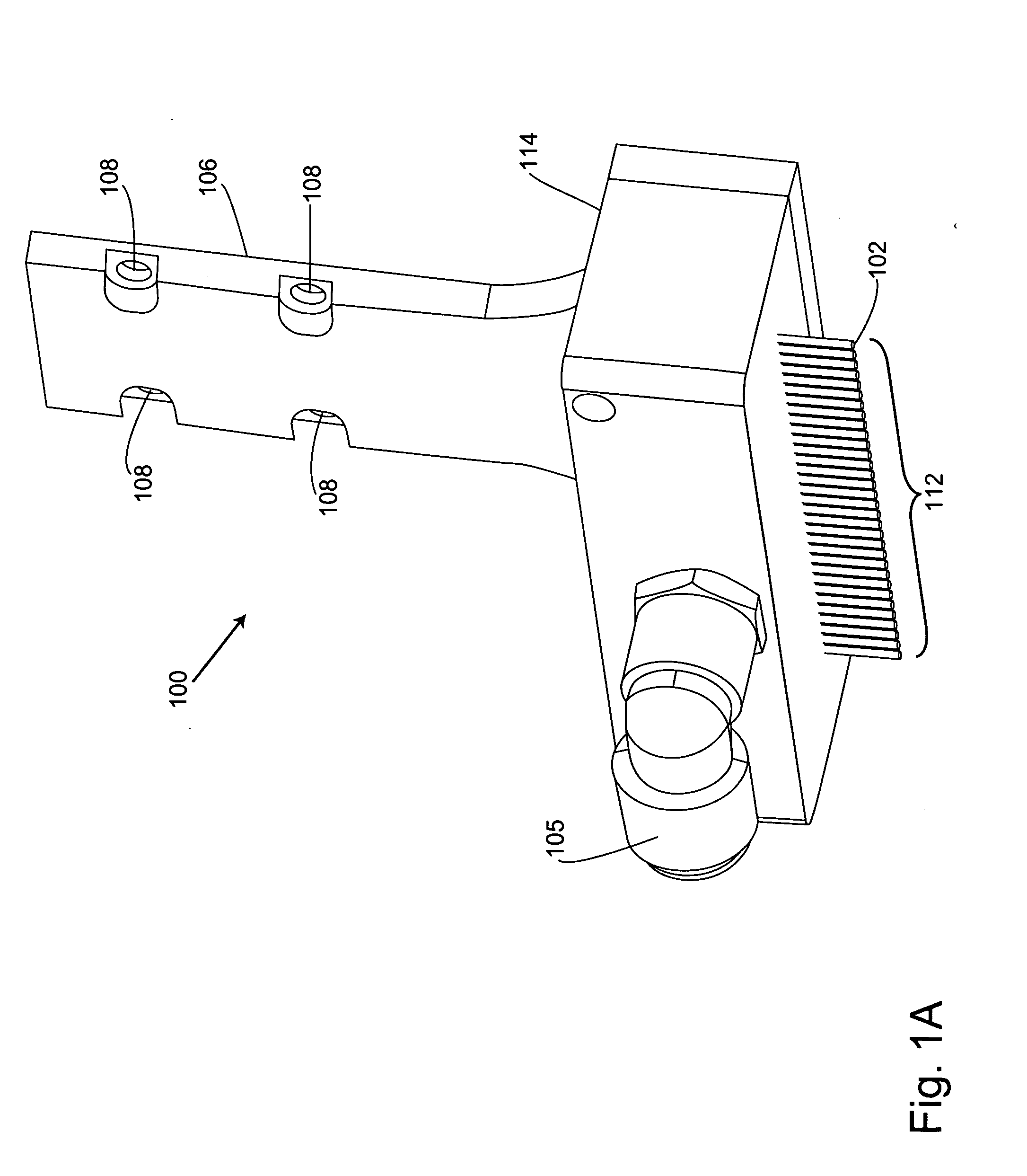Multi-well container processing systems, system components, and related methods
a multi-well container and processing system technology, applied in chemical methods analysis, material testing goods, instruments, etc., can solve problems such as limiting assay throughput, and achieve the effect of minimizing the disruption of cells and minimizing the agitation of other materials
- Summary
- Abstract
- Description
- Claims
- Application Information
AI Technical Summary
Benefits of technology
Problems solved by technology
Method used
Image
Examples
Embodiment Construction
I. Definitions
[0032] Before describing the present invention in detail, it is to be understood that this invention is not limited to particular embodiments. It is also to be understood that the terminology used herein is for the purpose of describing particular embodiments only, and is not intended to be limiting. Units, prefixes, and symbols are denoted in the forms suggested by the International System of Units (SI), unless specified otherwise. Numeric ranges are inclusive of the numbers defining the range. Further, unless defined otherwise, all technical and scientific terms used herein have the same meaning as commonly understood by one of ordinary skill in the art to which the invention pertains. The terms defined below, and grammatical variants thereof, are more fully defined by reference to the specification in its entirety.
[0033] The term “bottom” refers to the lowest point, level, surface, or part of a device or system, or device or system component, when oriented for typi...
PUM
 Login to View More
Login to View More Abstract
Description
Claims
Application Information
 Login to View More
Login to View More - R&D
- Intellectual Property
- Life Sciences
- Materials
- Tech Scout
- Unparalleled Data Quality
- Higher Quality Content
- 60% Fewer Hallucinations
Browse by: Latest US Patents, China's latest patents, Technical Efficacy Thesaurus, Application Domain, Technology Topic, Popular Technical Reports.
© 2025 PatSnap. All rights reserved.Legal|Privacy policy|Modern Slavery Act Transparency Statement|Sitemap|About US| Contact US: help@patsnap.com



